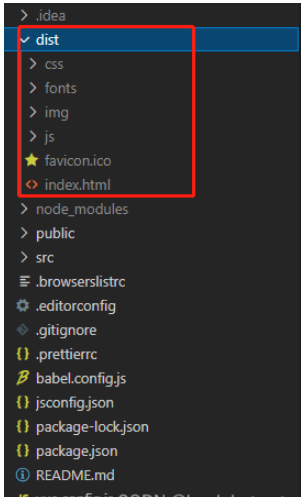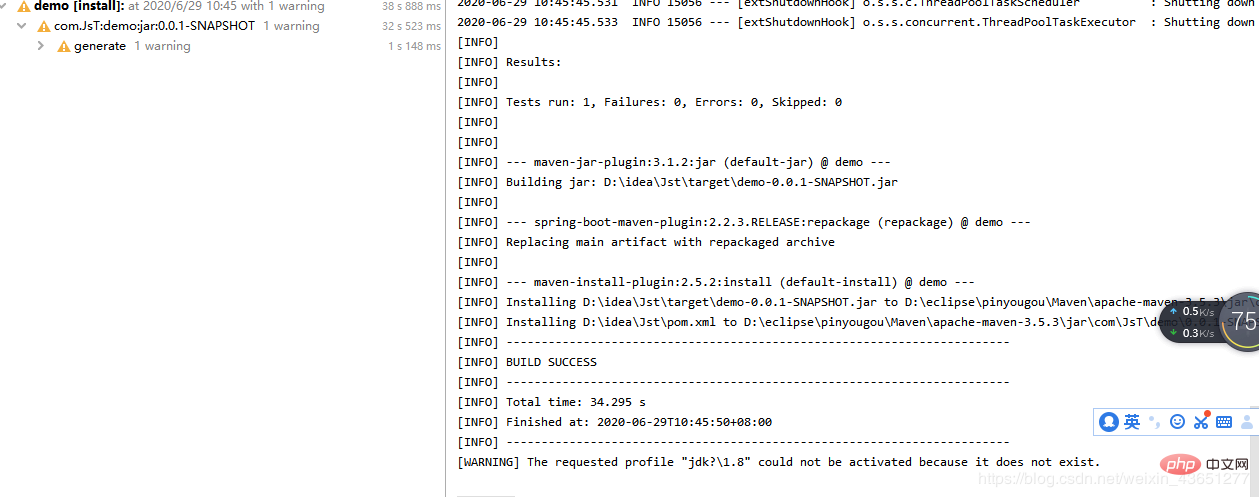 Backend Development
Backend Development Python Tutorial
Python Tutorial Python server programming: Learn to use memcached to optimize performance
Python server programming: Learn to use memcached to optimize performancePython server programming: Learn to use memcached to optimize performance
In Python server programming, performance optimization is a very important issue. In web applications, database queries are very time-consuming operations. Therefore, in order to improve the performance of web applications, one of the methods is to use a caching system. In Python, memcached is a very popular caching system that is very fast and can greatly reduce the time required for database operations.
This article will introduce the basic concepts and usage of memcached, and show how to use memcached in Python to improve application performance.
What is memcached?
Memcached is a high-performance distributed memory object caching system. It can store frequently accessed data in memory, thereby avoiding repeated reads of the database and improving the performance of web applications.
Memcached stores data in the form of key-value pairs. When storing data, you need to provide a key and a value. To retrieve a value stored in memcached, just provide the corresponding key.
In order to improve reliability, memcached distributes data to multiple servers for storage. When a server goes down, memcached will automatically migrate its data to other storage servers. This approach can reduce single points of failure and improve program availability.
Installing and running memcached
Before using memcached, you need to install it first. On most Linux distributions, memcached can be installed through the package manager. For example, in Ubuntu, you can use the following command to install:
$ sudo apt-get install memcached
After the installation is complete, you can use the following command to start memcached:
$ memcached -m 64 -p 11211 -u nobody -l 127.0.0.1
This command will start a memcached instance that takes up 64MB of memory. , and listen on port 11211 of the local host. The user-specified -nobody option means that memcached runs as the nobody user, which is an unprivileged user and usually does not pose a risk to system security.
Connecting memcached
PyLibmc in Python is a Python client library for memcached. To use PyLibmc, you need to install it first. You can install it using the following command:
$ pip install pylibmc
After the installation is complete, you can use the following code to connect to memcached:
import memcache mc = memcache.Client(['127.0.0.1:11211'], debug=0)
This will create a memcached client object mc, which connects to the 11211 port of the local host superior.
Storing and retrieving data
The method of using PyLibmc to store data is very simple. Here is an example:
mc.set("foo", "bar")This will store the string "bar" on the key "foo" in memcached.
To get the stored data, you can use the following code:
value = mc.get("foo")
print(value) # 输出:barIn most cases, memcached can respond quickly to get and set requests. However, if the requested key-value pair is not in the cache, you need to query the data in the database. In this case, memcached can't provide much help. Therefore, when using memcached, you need to consider which data is suitable for caching, and you need to set the memcached strategy according to the needs of the application.
Set expiration time
memcached allows setting an expiration time for each key-value pair. This time is calculated from the time when the key-value pair is stored, and after the time is reached, memcached will automatically delete the key-value pair from the cache.
Here is an example:
mc.set("foo", "bar", time=60)This code will delete the key-value pair from the cache after 60 seconds.
Batch operation
Using Python's memcached client library, multiple key-value pairs can be operated in batches, thereby improving the performance of the operation.
The following is an example:
mc.set_multi({"foo": "bar", "hello": "world"})This will store the two key-value pairs "foo" and "hello" into memcached at the same time.
Using memcached to optimize performance
Using memcached to optimize the performance of web applications is not an easy task. The following are several tips for using memcached to optimize performance:
- Cache frequently read data: In web applications, certain data often need to be read, such as user configuration information, article information, etc. Number of likes and so on. This data needs to be obtained from the database every time it is read. You can use memcached to store this data in the cache, thereby avoiding multiple reads from the database and improving application performance.
- Use expiration time: In some cases, the data in the cache may become outdated. For example, a user's configuration information may change after 5 minutes. If the data in the cache is out of date, then each read will need to get the latest data from the database. In order to avoid this situation, you can set the expiration time of memcached. When the expiration time arrives, memcached will automatically delete the key-value pair from the cache.
- Use distributed cache: If the data that needs to be cached is very large, there may be a situation where a single memcached instance cannot store all the cached data. You can consider using multiple memcached instances to store cached data in multiple instances.
- Use local cache: In some cases, you can consider using local cache. Local caching is faster than distributed caching because data is stored in local memory, and in multi-threaded or multi-process situations, local caching can avoid locking issues. However, the disadvantage of local cache is that it does not have the advantages of distributed cache and cannot handle load balancing of multiple servers.
Summarize
This article introduces the basic concepts and usage of memcached, and shows how to use memcached in Python to improve the performance of web applications. Using memcached can avoid repeated reads of the database, thereby improving program performance. However, you need to pay attention to some issues when using memcached, such as which data the cached data is suitable for and setting the expiration time, etc. By using memcached correctly, you can effectively improve the performance of web applications and improve user experience.
The above is the detailed content of Python server programming: Learn to use memcached to optimize performance. For more information, please follow other related articles on the PHP Chinese website!
 如何在 RHEL 9 上配置 DHCP 服务器Jun 08, 2023 pm 07:02 PM
如何在 RHEL 9 上配置 DHCP 服务器Jun 08, 2023 pm 07:02 PMDHCP是“动态主机配置协议DynamicHostConfigurationProtocol”的首字母缩写词,它是一种网络协议,可自动为计算机网络中的客户端系统分配IP地址。它从DHCP池或在其配置中指定的IP地址范围分配客户端。虽然你可以手动为客户端系统分配静态IP,但DHCP服务器简化了这一过程,并为网络上的客户端系统动态分配IP地址。在本文中,我们将演示如何在RHEL9/RockyLinux9上安装和配置DHCP服务器。先决条件预装RHEL9或RockyLinux9具有sudo管理权限的普
 在容器中怎么使用nginx搭建上传下载的文件服务器May 15, 2023 pm 11:49 PM
在容器中怎么使用nginx搭建上传下载的文件服务器May 15, 2023 pm 11:49 PM一、安装nginx容器为了让nginx支持文件上传,需要下载并运行带有nginx-upload-module模块的容器:sudopodmanpulldocker.io/dimka2014/nginx-upload-with-progress-modules:latestsudopodman-d--namenginx-p83:80docker.io/dimka2014/nginx-upload-with-progress-modules该容器同时带有nginx-upload-module模块和ng
 vue3项目打包发布到服务器后访问页面显示空白怎么解决May 17, 2023 am 08:19 AM
vue3项目打包发布到服务器后访问页面显示空白怎么解决May 17, 2023 am 08:19 AMvue3项目打包发布到服务器后访问页面显示空白1、处理vue.config.js文件中的publicPath处理如下:const{defineConfig}=require('@vue/cli-service')module.exports=defineConfig({publicPath:process.env.NODE_ENV==='production'?'./':'/&
 服务器怎么使用Nginx部署Springboot项目May 14, 2023 pm 01:55 PM
服务器怎么使用Nginx部署Springboot项目May 14, 2023 pm 01:55 PM1,将java项目打成jar包这里我用到的是maven工具这里有两个项目,打包完成后一个为demo.jar,另一个为jst.jar2.准备工具1.服务器2.域名(注:经过备案)3.xshell用于连接服务器4.winscp(注:视图工具,用于传输jar)3.将jar包传入服务器直接拖动即可3.使用xshell运行jar包注:(服务器的java环境以及maven环境,各位请自行配置,这里不做描述。)cd到jar包路径下执行:nohupjava-jardemo.jar>temp.txt&
 python中怎么使用TCP实现对话客户端和服务器May 17, 2023 pm 03:40 PM
python中怎么使用TCP实现对话客户端和服务器May 17, 2023 pm 03:40 PMTCP客户端一个使用TCP协议实现可连续对话的客户端示例代码:importsocket#客户端配置HOST='localhost'PORT=12345#创建TCP套接字并连接服务器client_socket=socket.socket(socket.AF_INET,socket.SOCK_STREAM)client_socket.connect((HOST,PORT))whileTrue:#获取用户输入message=input("请输入要发送的消息:&
 Linux怎么在两个服务器直接传文件May 14, 2023 am 09:46 AM
Linux怎么在两个服务器直接传文件May 14, 2023 am 09:46 AMscp是securecopy的简写,是linux系统下基于ssh登陆进行安全的远程文件拷贝命令。scp是加密的,rcp是不加密的,scp是rcp的加强版。因为scp传输是加密的,可能会稍微影响一下速度。另外,scp还非常不占资源,不会提高多少系统负荷,在这一点上,rsync就远远不及它了。虽然rsync比scp会快一点,但当小文件众多的情况下,rsync会导致硬盘I/O非常高,而scp基本不影响系统正常使用。场景:假设我现在有两台服务器(这里的公网ip和内网ip相互传都可以,当然用内网ip相互传
 如何使用psutil模块获取服务器的CPU、内存和磁盘使用率?May 07, 2023 pm 10:28 PM
如何使用psutil模块获取服务器的CPU、内存和磁盘使用率?May 07, 2023 pm 10:28 PMpsutil是一个跨平台的Python库,它允许你获取有关系统进程和系统资源使用情况的信息。它支持Windows、Linux、OSX、FreeBSD、OpenBSD和NetBSD等操作系统,并提供了一些非常有用的功能,如:获取系统CPU使用率、内存使用率、磁盘使用率等信息。获取进程列表、进程状态、进程CPU使用率、进程内存使用率、进程IO信息等。杀死进程、发送信号给进程、挂起进程、恢复进程等操作。使用psutil,可以很方便地监控系统的运行状况,诊断问题和优化性能。以下是一个简单的示例,演示如何
 怎么在同一台服务器上安装多个MySQLMay 29, 2023 pm 12:10 PM
怎么在同一台服务器上安装多个MySQLMay 29, 2023 pm 12:10 PM一、安装前的准备工作在进行MySQL多实例的安装前,需要进行以下准备工作:准备多个MySQL的安装包,可以从MySQL官网下载适合自己环境的版本进行下载:https://dev.mysql.com/downloads/准备多个MySQL数据目录,可以通过创建不同的目录来支持不同的MySQL实例,例如:/data/mysql1、/data/mysql2等。针对每个MySQL实例,配置一个独立的MySQL用户,该用户拥有对应的MySQL安装路径和数据目录的权限。二、基于二进制包安装多个MySQL实例


Hot AI Tools

Undresser.AI Undress
AI-powered app for creating realistic nude photos

AI Clothes Remover
Online AI tool for removing clothes from photos.

Undress AI Tool
Undress images for free

Clothoff.io
AI clothes remover

AI Hentai Generator
Generate AI Hentai for free.

Hot Article

Hot Tools

mPDF
mPDF is a PHP library that can generate PDF files from UTF-8 encoded HTML. The original author, Ian Back, wrote mPDF to output PDF files "on the fly" from his website and handle different languages. It is slower than original scripts like HTML2FPDF and produces larger files when using Unicode fonts, but supports CSS styles etc. and has a lot of enhancements. Supports almost all languages, including RTL (Arabic and Hebrew) and CJK (Chinese, Japanese and Korean). Supports nested block-level elements (such as P, DIV),

SublimeText3 Linux new version
SublimeText3 Linux latest version

SublimeText3 Mac version
God-level code editing software (SublimeText3)

DVWA
Damn Vulnerable Web App (DVWA) is a PHP/MySQL web application that is very vulnerable. Its main goals are to be an aid for security professionals to test their skills and tools in a legal environment, to help web developers better understand the process of securing web applications, and to help teachers/students teach/learn in a classroom environment Web application security. The goal of DVWA is to practice some of the most common web vulnerabilities through a simple and straightforward interface, with varying degrees of difficulty. Please note that this software

PhpStorm Mac version
The latest (2018.2.1) professional PHP integrated development tool





